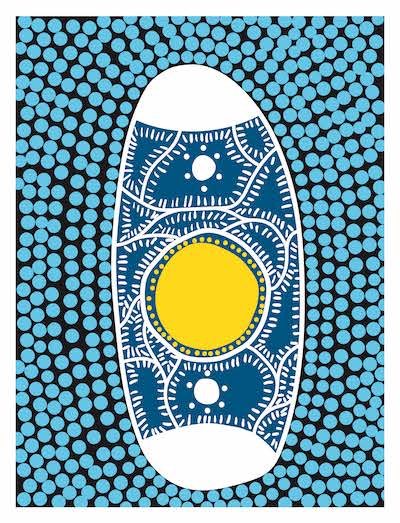
Harmony Day paper links
From the Director of Wellbeing, Matt Porter
World’s Greatest Shave, 16 March
Congratulations to all of the boys who took part in the World’s Greatest Shave on last Thursday and Friday. We ended up with over 100 new haircuts across the two days, far more than we had anticipated. Thank you to all of our generous volunteers and sponsors who contributed to our fund raising efforts or worked their fingers to the bone operating the clippers. With a number of cash contributions still to be processed we have just ticked over $14,000 to support those affected by blood cancer. For those who may wish to contribute you can visit the team page by clicking HERE.
National Day of Action Against Bullying, 17 March
Throughout the week students in Years 8, 9 and 10 participated in Brainstorm Productions workshop “Sticks and Stones” while Year 7 students participated in another workshop with “Project Rockit”.
All students from Years 7 to 12 completed an anti-bullying survey so that Waverley College can continue to review our policies and procedures in managing incidents of bullying, violence, harassment and discrimination and support our students to treat one another with courtesy and compassion and develop and maintain respectful relationships.
On Friday the National Day of Action Against Bullying all students made a strong show of support by forming the letters “NO WAY” in both the Kenny Quad and Centenary Quad during House Assemblies. A short video of these events is available on the College Website and Facebook page. A special thanks to the media club for helping pull this footage together.
Talking to your son about bullying
- Listen calmly and get the full story.
- Reassure them that they are not to blame.
- Ask them what they would like done about it and how you can help.
- Contact your son’s Wellbeing Mentor, their Head of House or the Director of Wellbeing.
- Check in regularly with you child to see if the situation has improved or not.
Where else to go for help
Harmony Day, 21 March
Coinciding with the UN International Day To End Racial Discrimination, the message of Harmony Day is “everyone belongs”. This day aims to promote cultural and religious diversity and promote acceptance and a sense of belonging for all. During Wellbeing Mentor Time each student made one paper link representing their personal cultural identity and heritage. These links were joined together by members of the Student Representative Council and used to decorate the lower balconies of the Centenary Quad. This activity celebrates Australia’s multiculturalism and symbolises Waverley College as an Inclusive Community.

Harmony Day paper links
Sexting and Respectful Relationships
Using technology is a big part of the lives of young people. It is becoming very common for teenagers to use their phone or social media accounts for romantic interactions. In particular, teenagers are using sexting as an expression of their sexuality and other romantic feelings. Teaching our boys and young men to self-manage and self-regulate is an essential life skill in utilising the advantages of technology and avoiding some of the potential pitfalls.
What is sexting?
Sexting is when someone shares explicit texts, images or videos through the internet or their mobile phone. It’s often intended as an expression of love or lust and usually begins as an exchange between consenting parties. Unfortunately such situations can rapidly spiral out of control when the relationships breaks down or friends and others view or receive or distribute copies of these images. It’s important to help teenagers understand that, while it might seem fun or enticing at times it is actually illegal for any person underage to produce or distribute inappropriate images, even if those images are of themselves.
Teenagers often send images via Snapchat believing that the image is only temporary, however, these can easily be recorded, screen shot captured or copied. Mobile phone carriers and social media providers have backed up records of such transmissions which can be retrieved in the event of a police investigation.
What if your teenager receives unwanted sexts?
- Tell your son to immediately delete the message
- Ensure that they do not share it with anyone
- Tell them to reply to the sender telling them that the content was unwanted and to not send any more images or videos
- If images are coming via social media, unfriend, block or report the offender.
What if your teenager’s explicit images have been shared without permission?
- Even if you’re shocked by your teen’s behaviour, try to stay calm and focus on helping them.
- If the image has been shared on social media, untag if possible and report the material to the social media provider.
- If your teen knows of any people who may have received the material, assist them to ask people to delete it.
What if your teen feels pressure to send explicit material?
- If your teen shares with you that they feel pressure to send explicit material, try to stay cool and open up a conversation about the issue. Ask them how they feel about it.
- Reassure them that it’s totally OK to refuse to send images.
- Ensure that they know to never send explicit images to someone that they’ve only met online, as there is really no way of knowing who they are actually sending the material to
Talk to them about how such pressure can indicate a wider problem in the relationship that may need addressing.
Promoting respectful relationships and combatting sexual violence
- Educate yourself about the warning signs of violence in young people’s relationships.
- Show your children both male and female role models who are succeeding in non-traditional careers.
- Model equality at home and in your own relationship – make sure your child sees you talking through problems in an open and respectful way and sharing jobs at home equally.
- Try not to reinforce gender stereotypes when you talk to your child about things around them – ask yourself, would I say the same thing to her if she was a boy (or to him if he was a girl)?
- Have a look at these resources for assistance in talking to your child about issues like sex, consent, relationships and body image:
For further information please see below:
https://www.ourwatch.org.au/Preventing-Violence
https://au.reachout.com
https://www.theline.org.au
https://www.esafety.gov.au/education-resources/iparent/online-risks/sexting



